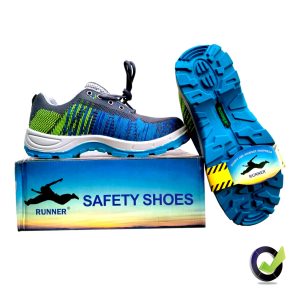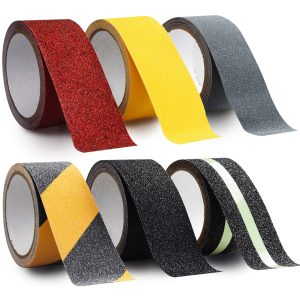Description
A welding face shield is a type of personal protective equipment (PPE) specifically designed to protect the face, eyes, and neck of welders from the dangers associated with welding processes, including intense light, heat, sparks, molten metal, and harmful ultraviolet (UV) and infrared (IR) radiation. These shields help ensure that the welder can work safely while maintaining visibility and comfort.
Key Features of a Welding Face Shield:
- Lens Protection:
- Auto-Darkening Lenses: Many modern welding face shields feature auto-darkening lenses that automatically adjust their tint in response to the brightness of the welding arc. This helps protect the eyes from harmful UV and IR radiation while allowing the welder to see clearly during different stages of welding.
- Fixed Shade Lenses: Some shields come with a fixed dark lens (e.g., shade 10, 11, or 12) that continuously provides protection during welding, but without the auto-darkening feature.
- UV and IR Radiation Blockage: The lenses are specially treated to block UV and IR radiation to prevent conditions like “arc eye,” which can cause painful inflammation of the cornea.
- Durable Frame:
- The frame or housing of the face shield is typically made from sturdy, high-impact-resistant materials such as plastic, fiberglass, or metal. The frame securely holds the lens and is designed to withstand the harsh conditions of a welding environment.
- Adjustable headbands or straps ensure a comfortable and secure fit, allowing welders to customize the fit based on their head size.
- Full-Face and Neck Protection:
- In addition to protecting the eyes, welding face shields usually extend down to cover the face, neck, and sometimes the upper chest. This helps protect welders from burns caused by molten metal, flying sparks, or radiant heat.
- Some shields feature a built-in neck guard or additional coverings to ensure full protection against welding spatter.
- Ventilation:
- To reduce fogging and improve comfort during long welding sessions, many face shields come with built-in ventilation. These vents help with airflow, reducing heat buildup and allowing the shield to remain clear during intense work.
- Comfort Features:
- Many face shields are equipped with cushioned headbands or adjustable straps that help distribute the weight evenly across the head, reducing neck and head strain.
- Lightweight materials and ergonomic designs contribute to comfort, making it easier to wear for extended periods.
- Lens Material:
- The lenses are typically made from durable, impact-resistant materials like polycarbonate or special glass. These materials can withstand flying debris, sparks, and minor impacts, ensuring the safety of the welder’s face and eyes.
- Interchangeable Lenses:
- Some welding face shields allow for easy replacement or upgrading of lenses depending on the type of welding or cutting being done, or the preference of the welder. This makes it possible to customize the face shield for different welding processes.
Benefits:
- Comprehensive Protection: A welding face shield offers protection against a range of hazards, including UV/IR radiation, flying debris, molten metal, and intense heat. This makes it crucial for preventing eye damage (e.g., “arc eye”) and face burns.
- Improved Visibility: Auto-darkening lenses improve visibility during the welding process, adjusting to the bright light of the arc and allowing the welder to see both the workpiece and the surrounding environment clearly.
- Comfort: With adjustable straps, cushioned headbands, and ventilation systems, welding face shields are designed for comfort during long hours of use.
- Durability: The strong construction of face shields and lenses helps them withstand the wear and tear of welding environments, ensuring long-term protection.
Limitations:
- Weight: Some face shields, especially those with additional features or heavier frames, can be cumbersome and cause neck strain during prolonged use.
- Cost: Advanced face shields with features like auto-darkening lenses, enhanced ventilation, and durable frames may come at a higher price point.
- Limited Full-Body Protection: While welding face shields protect the face and eyes, welders must still wear additional protective gear like gloves, jackets, and aprons for full-body protection against sparks and heat.
Types of Welding Face Shields:
- Fixed-Shade Face Shields: These face shields come with a fixed tint or dark lens that is designed for general welding. They offer consistent protection but do not adjust to changing lighting conditions.
- Auto-Darkening Face Shields: These feature a lens that darkens automatically when exposed to the bright light of the welding arc and lightens again when the welding is stopped. They provide greater convenience and protection during the entire process.
- Grinding Shields: Some welding face shields can be equipped with grinding lenses that protect against flying debris and sparks during grinding or cutting tasks.
Conclusion:
A welding face shield is an essential piece of PPE for anyone involved in welding or related tasks. It offers critical protection for the face and eyes from the dangerous effects of welding arcs, sparks, molten metal, and heat. With the right features such as auto-darkening lenses, full-face protection, and adjustable comfort, a welding face shield helps ensure that welders can work safely and effectively while minimizing the risks of injury.





